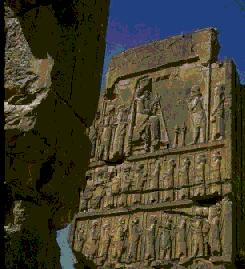 Avestan
was also called Zend language; it is not dead, just extinct from popular
communication, but still in use in sacral purposes in Zoroastrian communities
in India and Iran. The language is known by the only basic resource: the
ancient Iranian epic poem "Avesta", which became known in Europe in the
18th century. It could be written in about 4-6th century AD, but the language
of it is much earlier, and the written epic was preceded by many centuries
long oral tradition.
Avestan
was also called Zend language; it is not dead, just extinct from popular
communication, but still in use in sacral purposes in Zoroastrian communities
in India and Iran. The language is known by the only basic resource: the
ancient Iranian epic poem "Avesta", which became known in Europe in the
18th century. It could be written in about 4-6th century AD, but the language
of it is much earlier, and the written epic was preceded by many centuries
long oral tradition.
Avestan is well researched and known. It unites two dialects: the main difference of them is the unvoiced and voiced groups of consonants in the word. As a whole, the language is characterized by the brightly expressed inflection type of declension and verb conjugation, synthetic type of morphology, free word order in the sentence. It differs from Old Persian in a better preservance of inflections and endings of the word. Avestan kept all eight of Indo-European noun cases, three numbers, verbs had primary and secondary endings. Avestan was one of the so-called "satem" language, which turned the Proto-Indo-European k in s.
The tongue had features of both Eastern and Western Iranian languages,
that is why linguists believe it was spoken before the Iranian branch split
into two subgroups.